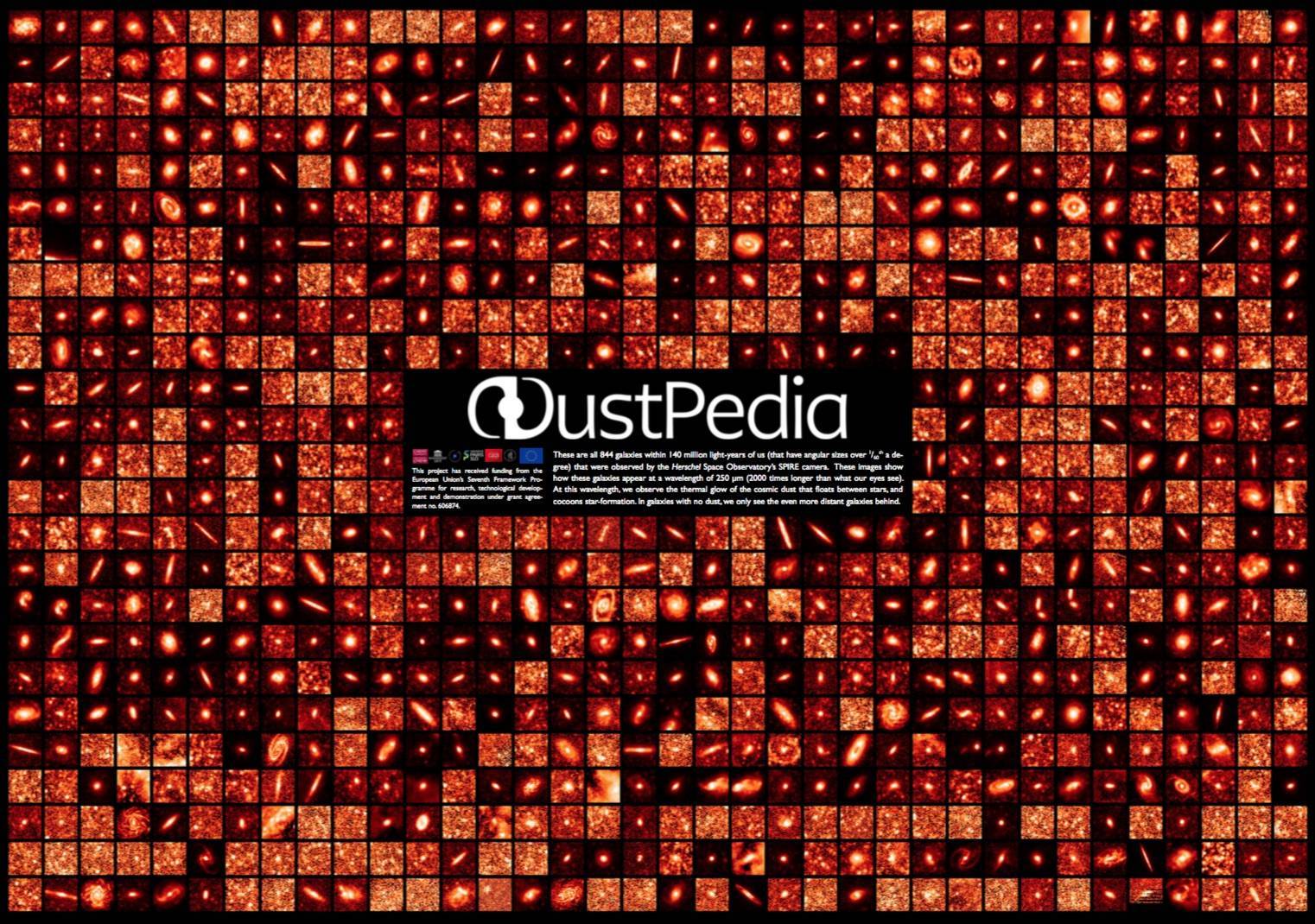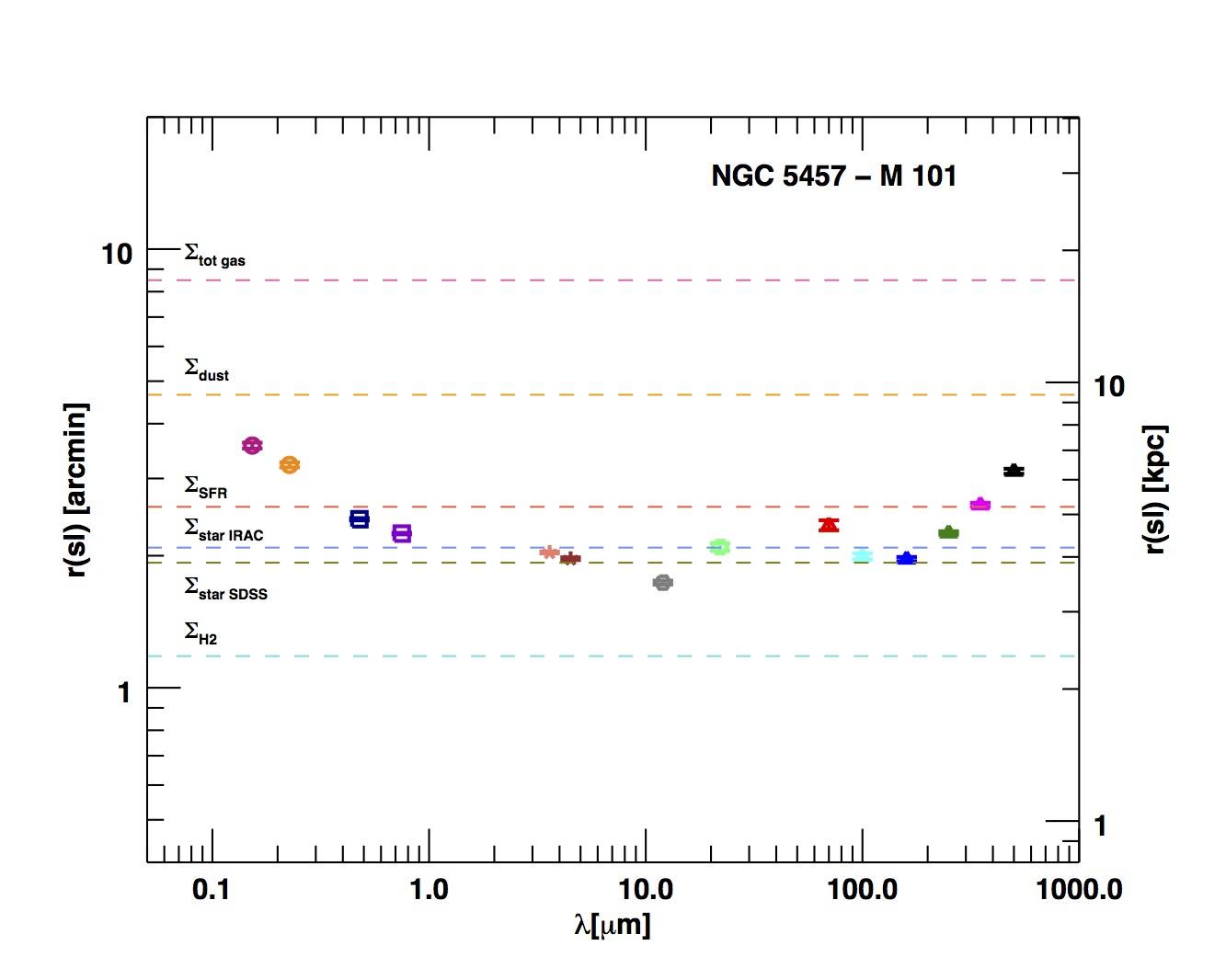Cosmic dust forms by nucleation and growth from the vapour phase in the cool atmospheres of low mass stars as they come to the end of their lives and probably also in the gas ejected from supernovae as more massive stars expire. Once deposited into the interstellar medium (ISM) the dust grains are subject to various physical processes that allow them to grow via the accretion of atoms and molecules and disintegrate in shock heated gas or via high-energy photon or cosmic ray processing.
The European Space Agency has invested heavily in two cornerstones missions, Herschel and Planck. The legacy data from these missions provides us the unprecedented opportunity to study cosmic dust in galaxies so that we can answer fundamental questions about the origin of the chemical elements, physical processes in the ISM, its effect on stellar radiation, its relation to star formation, and how this relates to the cosmic far infrared background.
In this framework, the DustPedia project is located (PI J. Davies, Cardiff University). Funded by the European Uninion under the Seventh Framework Programme, DustPedia is a collaboration of six European institutes. The Arcetri Observatory (INAF) is one of these institutes and the astronomers involved are Simone Bianchi (co-PI) and Viviana Casasola. The paper Davies et al. (2016) describes tools and computer models that DustPedia is developing to interpret the observations.
To carry out this research DustPedia has combined the Herschel/Planck data with those from other sources, providing photometry in up to 41 bands across the spectral energy distribution for 876 nearby (within ~3000 km/s or ~40 Mpc) galaxies. The dataset and photometry will soon be available in the DustPedia database. Figure 1 shows the DustPedia sample as seen by Herschel at 250 μm.

Figure 1: The DustPedia galaxies as seen by Herschel at 250 μm. Image Credit: DustPedia (C. Clark).
DustPedia is using these data and the output from its models to study the influence dust has on processes in the ISM and how it affects our interpretation of the global properties of galaxies of various morphological types and galaxies within different environments. Among the different science projects that DustPedia is developing, one of these has the aim to measure the radial exponential scale lengths of the stellar, gas and dust distributions of 18 nearby face-on spiral galaxies extracted from DustPedia sample (Casasola et al. in preparation). We computed the azimuthally averaged profiles in each band, which we then fitted to an exponential surface brightness distribution. How the exponential scale lengths of each band vary and relate to each other for the galaxy M 101 (NGC 5457) is show in Figure 2.

Figure 2: Exponential scale lengths of the surface brightness profiles of the galaxy M 101 (NGC 5457) in FUV and NUV GALEX, g and i SDSS, 3.6 and 4.5 μm Spitzer, 12 and 22 μm WISE, 70, 160, 250, 350 and 500 μm Herschel. The horizontal lines indicate the exponential scale length of the mass surface density of dust, molecular gas (H2), total gas and stars and that of the star formation rate density.
The clear result from this is just how much more quickly the surface density of stars falls with radius compared to that of the gas (mainly atomic in the outer regions) and dust. If the source of the dust is existing galactic stars then there must be a mechanism to transport it to the outer regions of the disc. If instead the bulk of the dust mass is due to accretion of metals in the ISM, the dust distribution is expected to be closer to that of the gas. Future DustPedia studies will help disentangle these two competing explanations from the subtle effects due to the transfer of radiation and the distribution of heating conditions in a galaxy.



